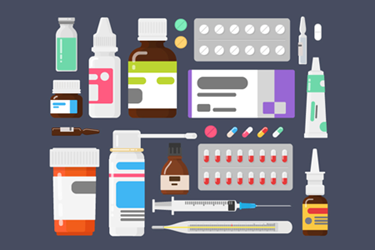Rethinking The Role Of Packaging Design In Drug Development
By Soumyanath Mishra, head of packaging development, Mankind Research Centre

Packaging is an important component in the development of various drugs, as it can greatly affect drug stability and safety. Packaging material is chosen on the basis of its efficacy and other characteristics that enable it to preserve the quality, potency, and safety of the pharmaceutical products. As the industry evolves, packaging is becoming more important both to the successful marketing of products and to the health and safety of patients. As a consequence, there are more reasons than ever to include packaging considerations early in the drug development process.
Packaging Is Key To Maintaining Drug Stability
Stability testing of pharmaceutical products and compatibility testing of packaging materials are integral parts of R&D in the pharmaceutical industry. The stability of a drug in solid and liquid dosage forms depends on the efficacy of the packaging materials to protect the drug from chemical degradation and changes in physical characteristics such as appearance, hardness, friability, dissolution, disintegration, weight variation, moisture content, and mechanical durability. This is particularly necessary for the storage of products under accelerated conditions.
The use of substandard packaging materials by some pharmaceutical companies has led to stability problems when those materials caused drug interactions, failed to provide the necessary moisture barriers, or caused the formation of hazardous materials. Studying the effect of environmental factors on packaging efficacy for solid and liquid dosage form preparations requires looking at the stability of a number of pharmaceutical products in packaging materials using glass, aluminum foil, plastic, paper, and others. As part of the drug development process, it is critical to evaluate the shelf lives of products stored in different packaging materials and examine packaging for its efficacy in maintaining the product integrity for a prolonged period of storage.
The role of packaging is often seen simply as a container for the product, but in many cases it has been established that products that are unstable in their formulations, due to formulation limitations, can be well stabilized with innovative packaging solutions. Also, factors such as how packaging can help with patient compliance, patient safety, and increased product stability and shelf life are often considered in the development of the product. This, however, is only possible through collaboration between the formulation scientist and packaging scientist during the R&D stage.
Common, but major, issues like delamination of glass, pH shifting, significant assay loss, and increase in impurities can also be solved through coordination with R&D during packaging development.
Packaging Considerations For Generics
Generic companies often follow the innovator or reference packaging for their product, but the generic drug product formulation team needs to think about the importance of packaging at an earlier stage of development. Although the name of the drug product is the same, there may be many differences in the product, such as:
- Source of the active pharmaceutical ingredient.
- Source of the excipient.
- Quantitative proportions of active pharmaceutical ingredients.
- Drug manufacturing processes and parameters, due to the existence of patents and exclusivity.
According to the FDA, the drug product should have bioequivalence to the reference product, but that does not mean the stability of the generic formula will be the same with the innovator packaging. So, it is critical for the packaging scientist to select the correct packaging materials to ensure stability of the new formula and to remain in compliance with FDA regulations.
The FDA’s expectation is that every proposed packaging system should be suitable for its intended use. It should protect the drug product inside, it should be compatible with the drug product, and its materials of construction must be considered safe for use with the drug product. Packaging materials must not interact sufficiently with the drug product to cause unacceptable changes in quality of either the product or the packaging. For example, interactions that cause a decrease in tonicity, or impurities that cause pyrogenic effects, can lead to unacceptable increases in toxicity, while adsorption or absorption could change the drug’s potency or concentration.1 It is therefore essential to know the extractable and leachable properties of the packaging material and how they will interact with the drug product.
Interaction between primary packaging components and the drug product may result in the product failing to meet the quality target product profile (QTPP), but this issue can be avoided by relying on a quality by design (QbD) approach to packaging design.2 For example, a change in the vendor supplying vials, or vials manufactured at different sites, may change the overall product stability, but many times we do not pay attention at the time of drug development. If QbD principles are applied to a packaging system during the drug development stage, the company can be confident that the leachable profile established for the materials will be predictable if the system is operated within the design parameters.
New Healthcare Markets Bring New Challenges
In the healthcare business, packaging is facing many challenges, such as ever-increasing regulatory requirements in numerous countries. Complex molecules/formulas and biologics are driving packaging changes, as those products tend to interact with conventional packaging materials. With an increase in demand for new packaging materials and the need to establish product-package compatibility in the R&D stage to ensure safety of the materials, the role of the packaging technologist should not be ignored at the time of product development.
Today, industry trends are driving the use of innovative packaging solutions that should be cost-effective. This is yet another reason it is important to address packaging during initial drug development to avoid any surprises at the time of commercialization.
Changes in hospital administration toward more self-administration processes require clear communication of product usages, simplification of packaging systems, and highly compliant packaging for products to be successful.
While packaging has become very important for marketing of any pharmaceutical product, pharma packaging is highly regulated. Hence, it is essential for pharma R&D packaging professionals, at the initial stage of development, to strike a balance between meeting the safety, quality, and regulatory requirements and minimizing cost.
There has been more consideration in recent years to safeguarding the transportation of drugs (cold chain, drop tests, etc.) as well as ensuring drug integrity (track and trace, serialization), both of which involve packaging R&D.
References:
- Guidance for Industry – Container Closure Systems for Packaging Human Drugs and Biologics, U.S. Department of Health and Human Services, Food and Drug Administration, Center for Drug Evaluation and Research (CDER), Center for Biologics Evaluation and Research (CBER), May 1999.
- How to Use QbD to Select Packaging Components, Nrupa Patel and Sandip Patel, May 2017.
About The Author:
 Soumyanath Mishra is head packaging development at Mankind Pharma Ltd.’s Mankind Research Centre in Gurgoan, India. He has more than 16 years of industrial experience in packaging development, working for pharmaceutical companies including Aurobindo Pharma, Jubilant Life Sciences, Zydus Cadila, and Dr. Reddy’s. His areas of expertise are pharmaceutical packaging innovation, packaging development, packaging optimization, and packaging material studies and controls. In his current role, he is responsible for packaging material/design innovations and packaging development for new products, in various dosages and forms for the semi-regulated and advanced regulated markets. Mishra earned a B.Sc. degree in chemistry from Mumbai University and a postgraduate diploma in packaging technology from the Indian Institute of Packaging (IIP).
Soumyanath Mishra is head packaging development at Mankind Pharma Ltd.’s Mankind Research Centre in Gurgoan, India. He has more than 16 years of industrial experience in packaging development, working for pharmaceutical companies including Aurobindo Pharma, Jubilant Life Sciences, Zydus Cadila, and Dr. Reddy’s. His areas of expertise are pharmaceutical packaging innovation, packaging development, packaging optimization, and packaging material studies and controls. In his current role, he is responsible for packaging material/design innovations and packaging development for new products, in various dosages and forms for the semi-regulated and advanced regulated markets. Mishra earned a B.Sc. degree in chemistry from Mumbai University and a postgraduate diploma in packaging technology from the Indian Institute of Packaging (IIP).
